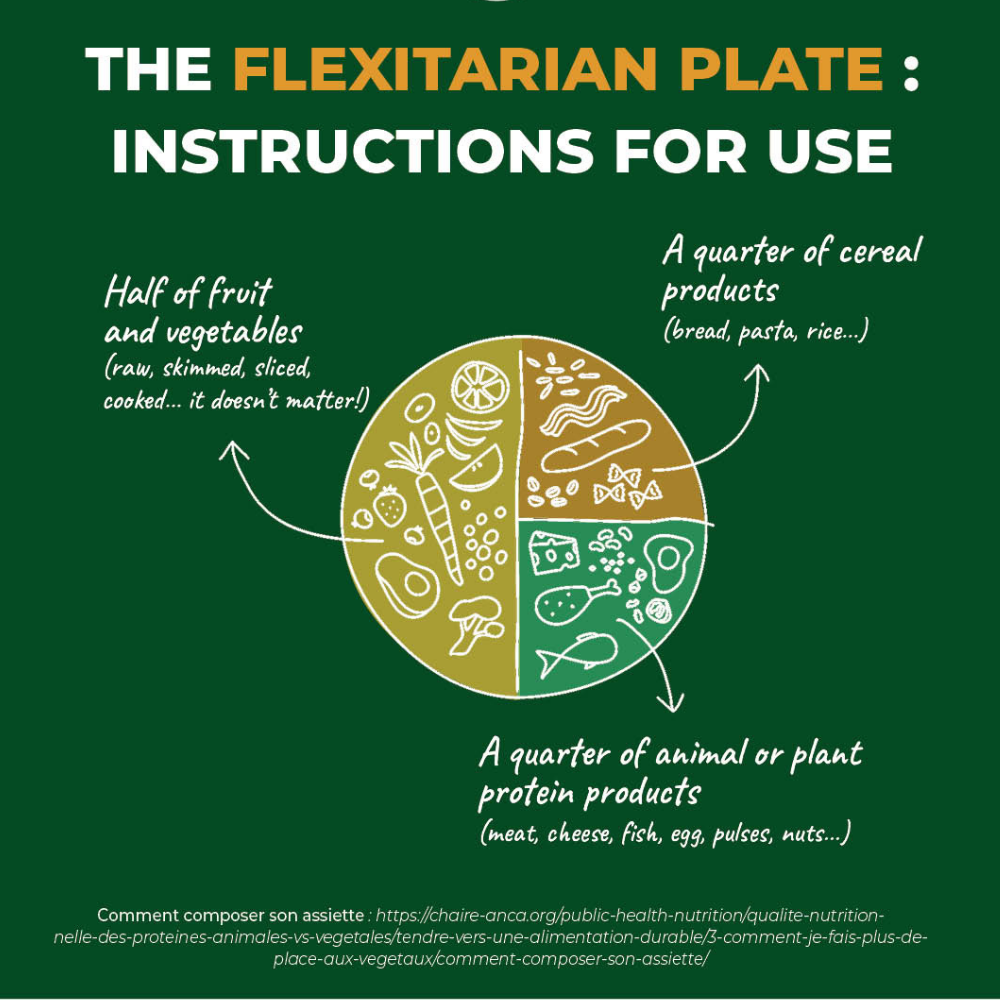Published at 2022, February 9th
43% of American consumers say they would replace meat-based proteins with plant-based proteins. Good news for the planet, the people, the climate and the biodiversity: they have a real role to play to embark their relatives in the transition towards a more responsible plant-based diet. On the occasion of the World Pulses Day, let’s remember the huge impact of our food on our environment and on the planetary boundaries.
By adopting new eating habits, in particular by reducing animal proteins in favor of plant based foods, we know today that we can limit greenhouse gas emissions, slow down the depletion of natural resources and fight against inequalities in the world while preserving our health. Focus on the flexitarian diet as a pragmatic solution accessible to all, to meet the challenges we must collectively face, with Cyrille AUGUSTE, CEO of Bonduelle Europe Long Life.
Flexitarianism for the well-being of people and the planet
Flexitarianism is a term first used in the 1990s by an American journalist. It refers to individuals who seek to consume less meat, without totally excluding it from their diet.
Whether it is for the sake of humans or their ecosystem, this diet has become increasingly popular. 23% of consumers globally are trying to limit their animal protein intake, typically as a result of health, sustainability and animal welfare concerns. But in what way does this diet constitute a solution for mankind and the planet?
Food is responsible for 26% of the greenhouse gases emitted on the planet. Our food systems impacts the quality of the air we breathe, in particular because of the fine particles and dust emitted by the fertilization of the fields, the work of the ground, the use of the machines at the time of the harvests, the residues of pesticide in the air or still the animal excrements, the whole resulting from the breeding and the industrial processes. In short, the whole production chain linked to food (breeding, agriculture, transport, packaging, but also production of food to feed livestock) certainly impacts our health, as well as it impacts the environment. Indeed, the degradation of water and soil, themselves guarantors of the richness of biodiversity, is also to be deplored. By adopting a flexitarian diet centered on legumes, vegetables and cereals, it is possible to reduce greenhouse gas emissions by 18% and ensure a better distribution of the resources we have.
The flexitarian diet also offers multiple benefits for human health insofar as it relies on the consumption of products rich in nutrients, good fats, and limits the intake of saturated fats and cholesterol, responsible for obesity and heart disease. Flexitarianism thus better meets the recommended dietary allowances of public health policies.
Last but not least, in a context of economic crisis and high inflation on all commodities, the adoption of a flexitarian diet could contribute to lower the cost of our food by reducing the average price of the shopping basket by 21%.
Getting started on a flexitarian diet: what does the ideal plate look like?
According to the EAT-Lancet Commission, made up of 37 experts from 16 different countries, the ideal plate consists of fruit and vegetables, whole grains, legumes and nuts. More precisely, it recommends the following distribution: one half of the plate should be filled with vegetables, one quarter with proteins with at least half of plant origin (legumes…) and another quarter with whole grains. Animal proteins, dairy products and sugar are included. Plant-based food represent about 70% of the plate (in grams).

The flexitarian diet, widely advocated, may however seem difficult to implement since it implies an evolution of our eating habits. Fortunately, there are many tools available to help people make their diet more plant-based.. The opportunity to discover new tastes and recipes.
The Fondation Louis Bonduelle proposes a wide range of actions in its white paper: from techniques for proportioning food in dishes to methods designed and developed for young people, who are sometimes resistant to vegetables. In its infographic, it indicates what to put on your plate to eat sustainably. It is about :
- Eat a wide variety of foods from different food groups.
- Eat at least 2 to 3 servings of fruit each day.
- Eat at least 2 to 3 servings of vegetables each day.
- Preferring potatoes, sweet potatoes or manioc in minimally processed form.
- Choose mainly whole grains: corn, millet, oats, wheat or unprocessed brown rice.
- Eat legumes regularly.
- Limit as much as possible red meat and eat little (if any) processed meat products.

The partnership chair of the AgroParisTech teaching and research establishment is a Think&Do Tank that aims to understand and accompany the eating behaviors of 18-35 year olds towards more sustainable diets. With the French “Manger pour le futur” (“I eat for the future”) program, an Instagram account created by this chair, you will discover the daily life of a fictional young graduate who goes to meet researchers, field actors, but also chefs and shopkeepers who surround her. The objective: to better understand how to make more virtuous choices, by experimenting new ways of eating easily and with pleasure. An opportunity to find many tips and gourmet recipes!
Health, planet, purchasing power… Many elements favor the adoption of a flexitarian diet as a pragmatic and accessible answer to the challenges we face. Offering many solutions in terms of health and climate, it also guarantees the possibility of feeding the 9.7 billion people on earth in 2050.

